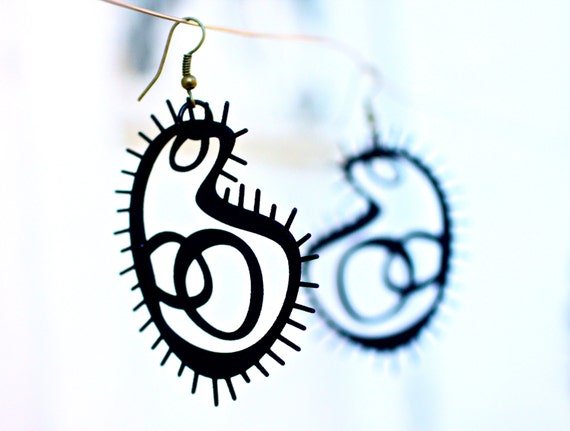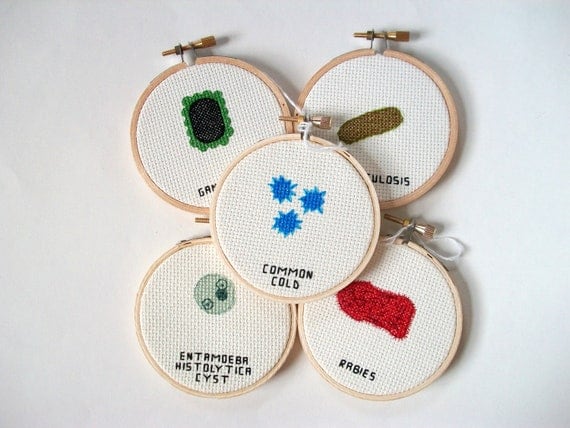The season of giving will soon be upon us so I thought I this would be a great opportunity to search the web and curate a mini exhibition of the anatomically awesome things that people create! For the first of this series lets start small, with some microbes!
Society6 is one of the sites I joined last year to help promote my work. And through it I have been able to find a variety of fresh yet talented artists:
(And I am not quite sure what this is, but I like it too … )
Microbes are also quite fashionable:
Or maybe you know someone that appreciates more tangible objects. You know grown adults searching for “collectables” ( a.k.a desk toys) .
Shapeways is an amazing site bringing 3D printing and prototyping capability to the masses.
And of course we can’t forget about the more commonly known plush microbes. Cuddly enough for an infant, even the bed bug is adorable!
Alicia Watkins is an Etsy Vendor who will create any one of a variety of microbes by cross stitch:
Or perhaps you are crafty enough to try out some of her patterns yourself?!
Know of any other microbial wonders? Feel free to share in the comments of this post!














